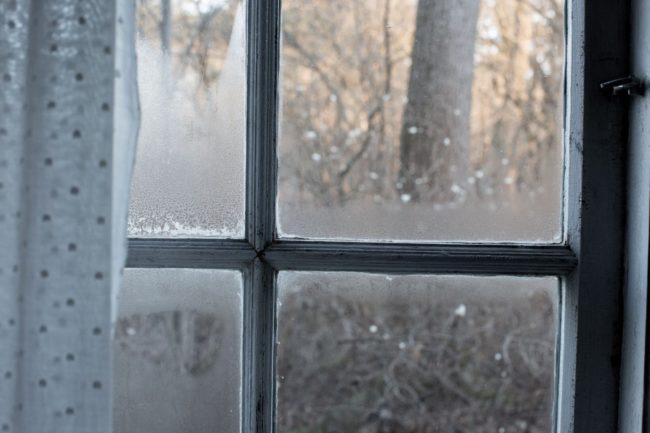10 Places in Your Home That You Should Renovate for Winter

The winter season is a great time to cozy up by the fireplace, watch holiday movies, and sip on hot chocolate. However, the interior and exterior of your home both take a bit of a beating due to undesirable weather conditions like snow, hail, and freezing rain and temperatures.
You might not think the winter season is an ideal time to renovate your home, but these months typically require you to stay inside more often. As a result, you can get more projects done inside and outside of your home, weather permitting. It’s crucial to make certain renovations before the snow starts to fall.
Here are some critical areas of your home to renovate in preparation for the winter season.
1. Roof
Your home’s roof is subject to all winter weather conditions. The last thing you want is your roof to cave in during a winter blizzard. You might not need to completely replace your roof, but there are some important maintenance tips to follow.
Examples include repairing broken shingles, adding new caulking, and trimming nearby trees to prevent damage. Making these small improvements will have your home’s roof ready in no time.
2. Gutters
During the fall season, gutters become filled with leaves, branches, dirt, and other debris from outside. Large amounts of buildup stop the stream of water and do not allow gutters to drain properly.
In the winter, ice dams can appear on gutters after snow and ice accumulate. This adds more weight to the gutters, which can lead to exterior damage. Clean the gutters in your home and make sure they’re well-secured to your home.
3. Pipes
Due to declining temperatures, frozen pipes are a serious problem for many homeowners. Water expands as it freezes, adding pressure to the pipes and eventually causing them to break.
Before it dips into the single-digit degrees and snow and ice arrive, protect your pipes from freezing by following these steps:
- Drain water from swimming pools and sprinkler lines.
- Avoid using antifreeze products.
- Remove, drain, and store outdoor hoses and close inside valves to water lines.
- Consider relocating exposed pipes to increase protection from freezing.
If you plan on leaving home, be sure to leave your heat on, but make sure the thermostat is set higher than 55 degrees.
4. Siding
If the siding of your home has peeling paint, moisture can infiltrate and cause the wood in your walls to rot. The siding on your home is the structure’s first line of defense during poor weather conditions. Thankfully, repairing or replacing siding is one of the easier DIY home improvement projects.
There are different ways to repair siding, such as using caulk, applying patches, or replacing small sections of damaged siding. If you need to update your siding or make large repairs, you might want to get all of your home’s siding replaced by a professional.
5. Deck or Porch
Another area of your home you can consider renovating is your deck or porch. Heavy snow and rain can sit on your front porch or back deck for months, which damages the wood and whatever furniture you have outside.
An effective way to protect your deck is to pre-treat the wood by filling cracks and holes in the paint. If the wood on your deck or porch begins to rot, it can make the deck unstable, which would require a more expensive replacement.
6. Basement
The basement is one area of your home to consider renovating for the winter. You can make various improvements such as changing the light fixtures, repairing any cracks in the concrete, or upgrading your insulation.
If your basement is unfinished, you can make more significant renovations during the winter. Since basements are underground, the project won’t be subjected to the elements. Get creative and turn your basement into a functional space.
7. Flooring
Over the years, a home’s flooring starts to deteriorate due to all the wear and tear it goes through every day. For example, many homeowners install hardwood floors because they pair well with most home interiors.
While hardwood floors have a long life span, you can only refinish them around 10 times before you’ll need a full replacement. You should consider refinishing or replacing your hardwood flooring and updating or deep-cleaning your carpeting if your budget allows for it.
8. Fireplace
In the cold winter months, nothing can beat sitting on the couch with your fireplace roaring! Fireplaces are aesthetically pleasing and functional, so why not add one to your home?
You can enhance your home’s interior and existing fireplace by adding a wood mantel using millwork. Mantels help draw attention to your fireplace and give homes an elegant look. Place small trinkets and decorations on your mantel – it’s a great way to add personal flair to your fireplace.
9. Laundry Room
If you have kids, you know how quickly laundry piles up throughout the week. Busy schedules make it challenging to do laundry during the week or straighten up the laundry room. In the winter months, we wear multiple layers of clothing to keep us warm, so the amount of laundry we do increases.
Now is a good time to prepare your laundry room for more clothes. You might want to upgrade your machines, buy space-saving furniture, or fix your broken drying rack. Try to renovate your laundry room before the weather gets even colder.
10. Safety Features
December, January, and February are the peak months for house fires due to the increased use of heating systems, fireplaces, and space heaters. You should consider testing and upgrading your smoke detectors and carbon monoxide detectors to be safe.
Keep an eye out for your detectors’ expiration dates, as they should be replaced every five to seven years. Test your detectors monthly to ensure you and your family members are safe.
Preparing Your Home for the Cold Winter Months
Even if the weather outside is cold and wet, that doesn’t mean you have to put off all your DIY home improvements. You can complete several interior projects and make small repairs or replacements outside at the start of the winter season. Consider assessing the spaces in your home that are susceptible to winter weather and make any necessary repairs and renovations.
